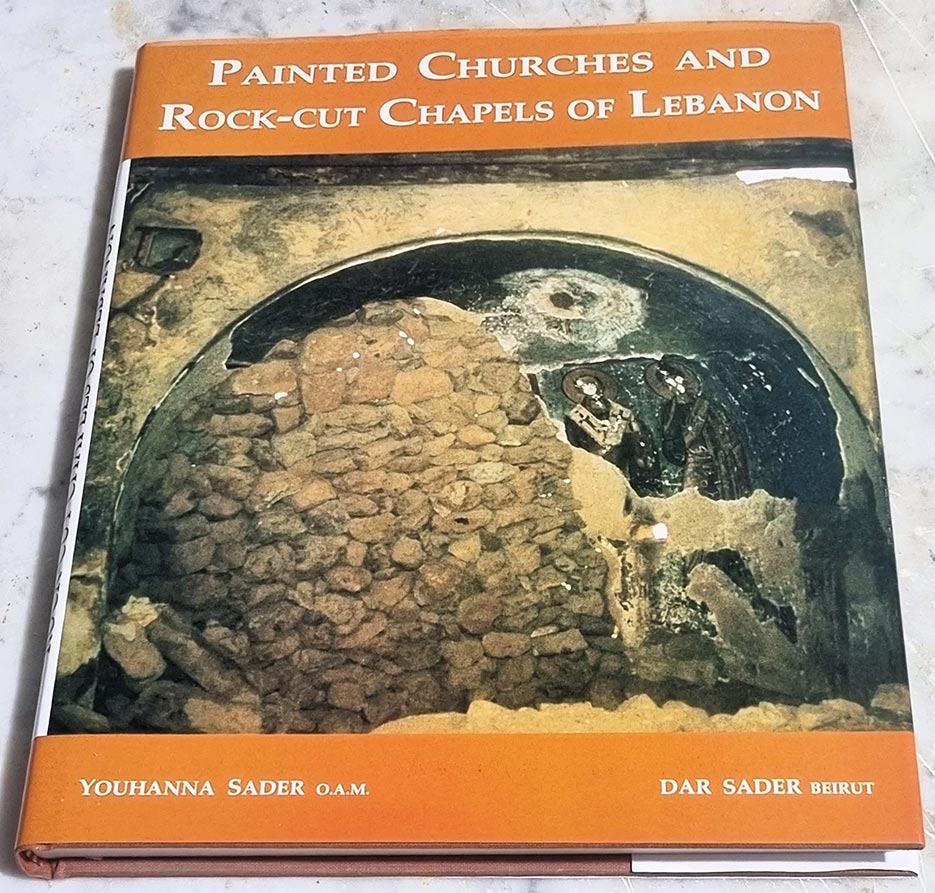Painted Churches and Rock-cut Chapels of Lebanon by Youhanna Sader
Painted Churches and Rock-cut Chapels of Lebanon
$53.23
Description
LebanonPostcard presents the book Painted Churches and Rock-cut Chapels of Lebanon – Youhanna Sader OAM – Dar Sader Beirut
Hardcover book with paper protection, 29.5×24 cm, 305 pages
Frescoes depicting personages of the Old and New Testaments e.g. Abraham, Jesus, Mary and the Apostles, also saints and bishops of the church’s history can be found in the churches of Lebanon.
Father Youhanna Sader who is researching for years on the Christian art in Lebanon, proposes in this book a tour of the frescoes concerning the Crusade period which have survived in Maronite churches and rockcut chapels of Lebanon. Reminding us of the origin of Christianity in Lebanon he points out that the origin of this Lebanese art is to be found in Cappadocia. When this region was conquered by Muslim troops and moreover the iconoclastic period, hostile to images, prevented monks from exercising their art. The latter fled from there and joined their brethren in Lebanon. They brought their knowledge along and they and their Lebanese schools decorated many churches in Lebanon. The crusaders were so fascinated by this art, that they asked these artists to paint their churches.
From here then this was brought to Europe. Most of the surviving frescoes are damaged, some even heavily. However, the description of the frescoes and the colorful photos show very clearly their richness.
Father Youhanna presents not merely a book of plates of Lebanese church art, but his descriptions make this book also quite valuable for scholars of Lebanese and Oriental sacred art.
Dr. Harald Suermann
(Front cover of the book) The monastery of Deir al-Salib
Between the orchards and the hillside that connects the outskirts of Beirut to the ends of Lebanon there is a small, old chapel carved in the white rocks seated amongst the olive, almond and willow trees.
Upon entering this fascinating chapel one can see on the wall to the east a fresco with Phoenician characteristics and style painted in the rock. Fate had altered its highlights and the seasons changed its colors. In it is depicted “Ashtarout” the goddess of love and beauty, seated on a lavish throne surrounded by seven naked virgins. The first one carrying a torch, the second a fiddle, the third a censor, the fourth a jar of wine, the fifth a rose, the sixth a laurel ant the seventh a bow with arrows, all looking towards the goddess with a faces of obedience.
And on the second wall a painting better preserved, representing Jesus Christ crucified and besides Him, His sad mother and Mary Magdalene with two other mourning women. This painting of Byzantine style points out that it was painted in the fifth or sixth century A.D.
On the left wall are two small oval openings through which the sun’s rays enter striking the two paintings as if pouring and covering them with gold-water.
In the center of the chapel a square marble rock whose sides have different old carvings covered with a thick layer of solidified blood as though offerings had been made by the ancients and covered them with wine, perfume and oil.
Broken Wings
GIBRAN KHALIL GIBRAN
LebanonPostcard will be responsible for sending the book you order, through a fast courier with a tracking number, guaranteeing reception of the package. The souvenirs may take three to five days to arrive, according to the country they are sent to.
Additional information
| Weight | 1.75 kg |
|---|---|
| Dimensions | 30 × 24 × 4 cm |











